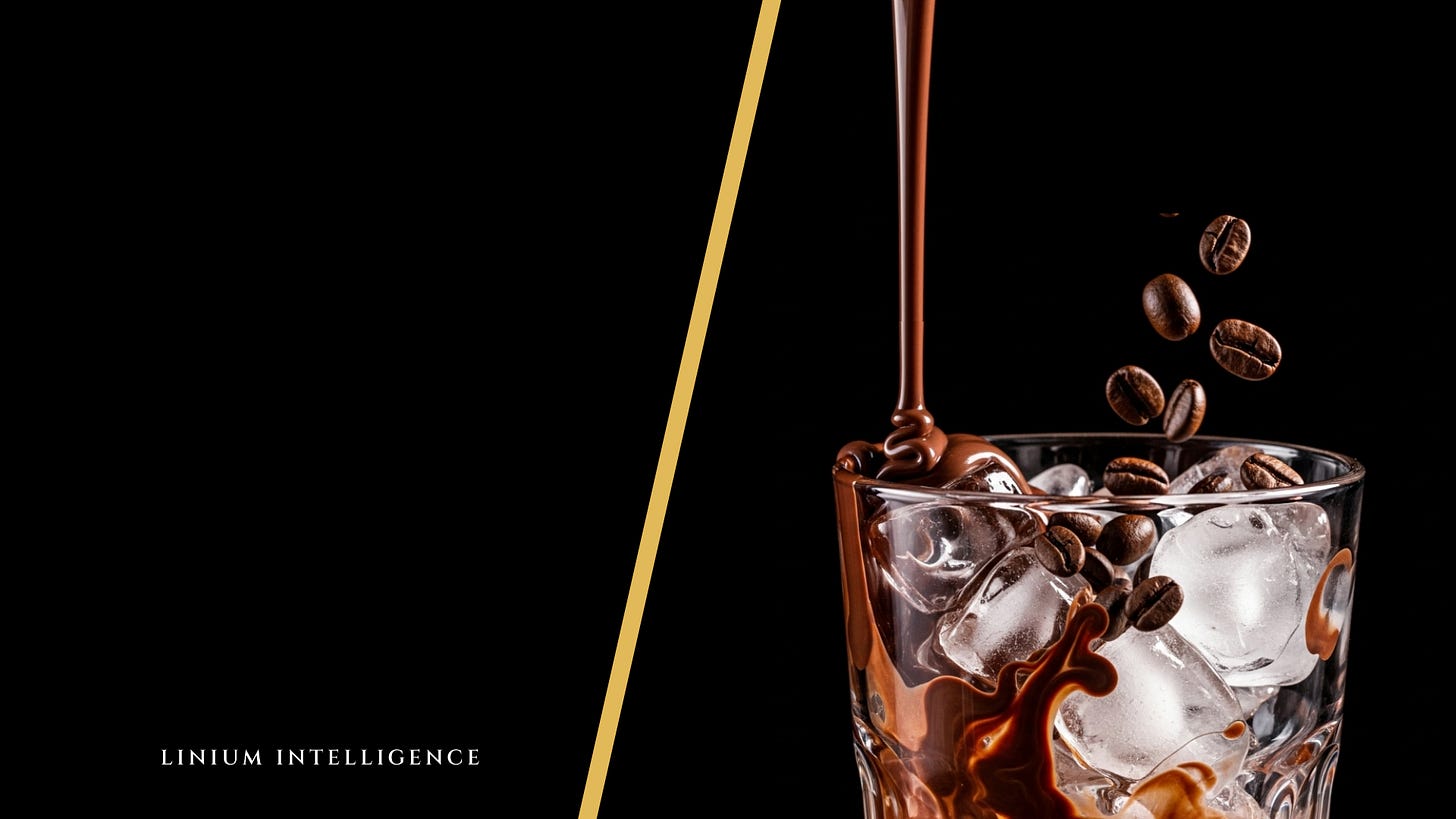The UAE chocolate confectionery space is intensely competitive, hosting over 170 brands that vie for the attention of a multicultural consumer base. To explore untapped growth opportunities and enhance market penetration, stakeholders can gain valuable perspective by analyzing the mature UAE coffee retail market. Both categories target the same consumer across shared retail channels and frequent consumption moments—the coffee break, social gatherings, and personal indulgence—making the structural dynamics and brand positioning successes validated by coffee brands a useful framework for informing strategy in chocolate.
Cross-Category Insights For Chocolate Stakeholders
Market concentration contrast: The coffee market is dominated by a single, commanding leader, Nescafé, with a market share of over 20%, whereas the UAE chocolate market’s top two brands, Galaxy and Cadbury, command considerably smaller shares each, indicating that chocolate is structurally more fragmented and competitive at the top.
Private label volume: Carrefour, the top store brand in coffee, commands a sizeable single digit market share of the UAE”s total coffee market, providing a quantified signal that store brands are an established volume threat in core grocery baskets, and could ptentially far outpace the current low single digit share collectively held by store brands in the chocolate segment in the UAE.
Shared emotional drivers: Coffee brands like Lavazza successfully drive volume by positioning the product for shared gatherings (Eid, family gatherings). This positioning directly aligns with chocolate leaders like Cadbury, which is positioned for gfts and treats to share during family and friend gathering, confirming a shared key consumption moment for both categories.
Local flavor synergy: The high visibility of local flavor integration (e.g., Kunafa, Karak in chocolate launches) aligns with the success of Arabic coffee brands, suggesting that heritage cues are strong drivers for securing customer loyalty across the price spectrum.
Individuality as a premium driver: Coffee’s premium segment is partly driven by personalized experience, with Starbucks, the UAE’s second-biggest brand by coffee market share, celebrating individuality through coffee personalization services. Chocolate’s DTC channel players could explore chocolate customization services as part of efforts to upgrade customer experiences.
Geographic source authority: Foreign brands dominate both categories, and UAE-based chocolate brands hold a smaller single digit share of the market. This suggests an opportunity for local players to establish greater market authority and domestic preference, leveraging on cultural resonance and affinity.
Global brand leadership synergy: Nestle’s dominant coffee market share through Nescafé and its top-tier presence in chocolate through KitKat creates powerful cross-category retail leverage, allowing the corporation to use the essential high-frequency status of its coffee brand as financial and logistical collateral to secure optimal shelf placement and superior promotional terms for its chocolate offerings.
Strategic Implications For Chocolate Confectionery Stakeholders
Innovate specialized single-serve formats: Coffee’s success with high-frequency pod and instant systems suggests chocolate producers could explore specialized, pre-measured, single-serve formats that cater to an individual daily ritual, moving beyond the current reliance on bar and pouch formats. Recent launches, such as the mini FrischSchoggi from Läderach, exemplify this exploration into portion-controlled indulgence.
Defend against private label volume: Carrefour’s sizeable share in coffee signals the potential for rapid private label volume growth in chocolate. As price sensitivity compels consumers to trade down amid a climate of rising cocoa prices, stakeholders are presented with the challenge of ensuring the value proposition of their entry-level chocolate brands is sufficiently robust to resist the expansion of retailer own-brands beyond their current low single digit share of the market.
Monetize customization and individuality: The Starbucks-validated concept of celebrating individuality, which supports its premium market share, highlights a potential opportunity to elevate the chocolate experience. Brands may explore innovation in modular, personalized product configurations or custom-gifting formats via DTC channels. This approach caters directly to the consumer’s desire for bespoke indulgence, potentially creating a higher-value proposition than standardized offerings.
Reframe consumption as a ritual: With bars and pouches together commanding over three quarters of the UAE’s chocolate confectionery market, the category is already anchored in accessible, on-the-go formats. The opportunity lies not in driving habitual excess, but in elevating the everyday moment—positioning chocolate as a deliberate ritual rather than an occasional impulsive treat. Pairing a small bar with a coffee or afternoon break transforms it into a measured indulgence, anchored in routine yet mindful. As consumer focus shifts toward wellness and moderation, this space naturally opens for better-for-you players—those innovating around reduced sugar, cleaner formulations, or functional benefits—to redefine what a “daily chocolate moment” can look like.
Co-penetration via BFY partnership: Sugar Free D’lite’s presence in both coffee and chocolate categories validates a viable segment of BFY (Better-For-You) cross-category shoppers who prioritize ingredient control and clean labels. Chocolate makers, particularly those focused on dark, low-sugar, high-cocoa offerings or other BFY attributes could explore opportunities to form strategic co-branding or retail partnerships with established BFY coffee brands. This directly penetrates the targeted consumer’s purchasing routine at the point of sale, driving dual-category volume growth.
Leverage local identity for differentiation: Despite rapid growth in chocolate confectionery, UAE chocolate labels still command only a marginal share of the market. The gap signals an opportunity to turn local identity into a defining asset rather than a footnote. By embedding cultural cues and regional craftsmanship into brand storytelling, these producers can achieve the kind of distinction that fueled the rise of locally anchored coffee houses. Elevating visibility and perceived value through authenticity positions them to hold ground against the entrenched dominance of imported brands.

